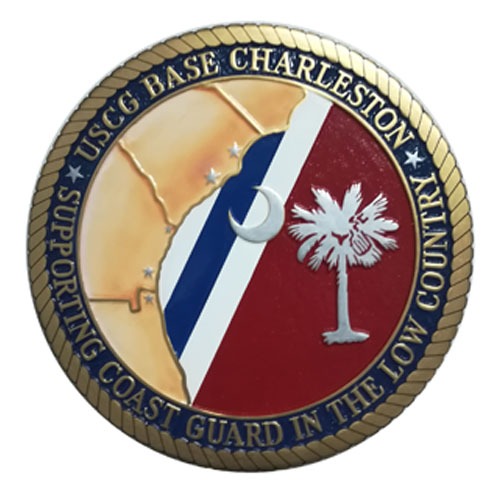Nov. 26, 2021 —

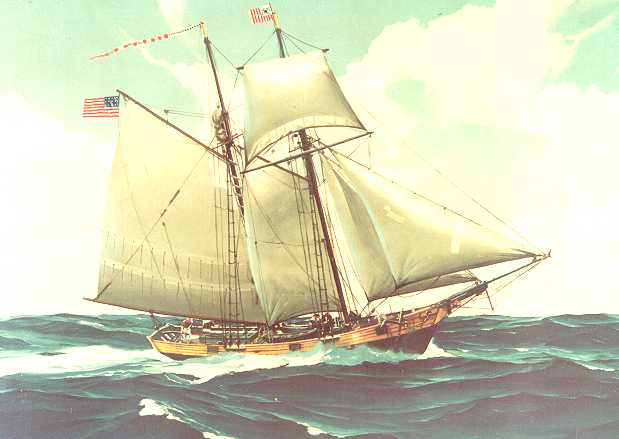 The City of Charleston, S.C., has been a Coast Guard base of operations for over 230 years and its importance to the service has increased throughout its history.
The City of Charleston, S.C., has been a Coast Guard base of operations for over 230 years and its importance to the service has increased throughout its history.
The nation’s first Treasury Secretary, Alexander Hamilton, founded the U.S. Revenue Cutter Service in 1790, stationing one of the “first fleet” of 10 cutters, the South Carolina, in Charleston. Five years later, one of the cutter’s crewmembers drowned, becoming the first Coast Guardsman to die in the line of duty. An African American, he was also the first minority service member to lose his life while serving.
Late in the 1790s, during the Quasi War with France, a second Charleston-based cutter named South Carolina distinguished itself in combat. In the same conflict, Charleston native Hugh Campbell, skipper of Revenue Cutter Eagle, captured numerous French vessels becoming one of the nation’s most successful combat captains. He later transferred to the U.S. Navy to become one of the foremost U.S. Naval officers of the early 1800s.
In the early 1800s, revenue cutters served continuously out of Charleston. During the War of 1812, the heavily armed cutter Gallatin protected the harbor and suffered a magazine explosion off the waterfront destroying the cutter and killing a number of crewmembers. In 1832, during the infamous Nullification Crisis, revenue cutters enforced federal tariff laws in Charleston. And, in 1853, more cuttermen were lost when the cutter Hamilton sailed out of the harbor into the teeth of a severe storm. The cutter went ashore not far from Charleston with all hands lost.
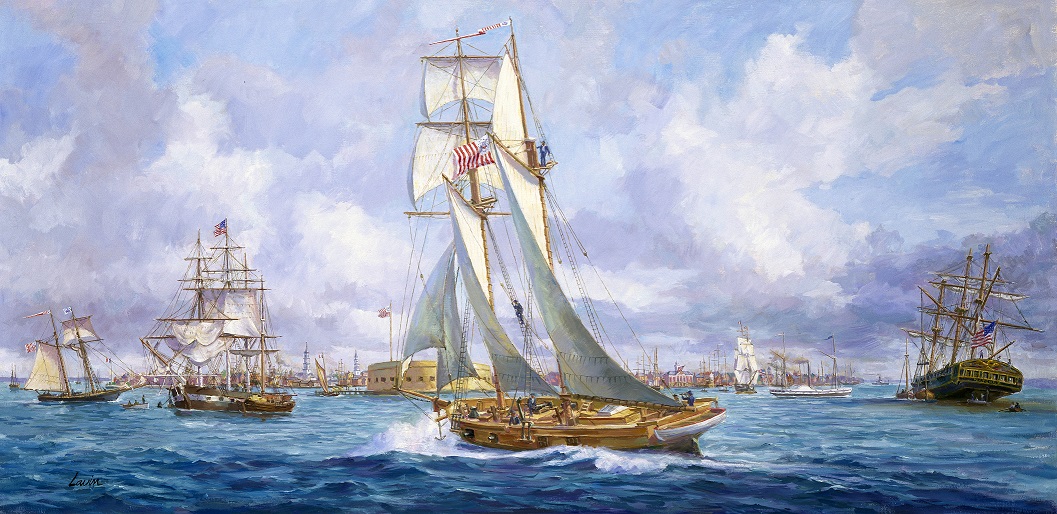 During the Civil War, revenue cutters in Charleston saw interesting service. After South Carolina seceded from the Union in December 1860, the Charleston-based cutter William Aiken was turned over to local authorities by its captain. Later, in April 1861, President Abraham Lincoln sent a troop convoy to Charleston, escorted by Revenue Cutter Harriet Lane, to relieve the Union garrison at Fort Sumter. During the subsequent bombardment of the fort by Confederate forces, Harriet Lane fired a shot over the bow of the un-flagged secessionist vessel Nashville. Historians consider it the first naval shot of the Civil War.
During the Civil War, revenue cutters in Charleston saw interesting service. After South Carolina seceded from the Union in December 1860, the Charleston-based cutter William Aiken was turned over to local authorities by its captain. Later, in April 1861, President Abraham Lincoln sent a troop convoy to Charleston, escorted by Revenue Cutter Harriet Lane, to relieve the Union garrison at Fort Sumter. During the subsequent bombardment of the fort by Confederate forces, Harriet Lane fired a shot over the bow of the un-flagged secessionist vessel Nashville. Historians consider it the first naval shot of the Civil War.
The 1800s saw Charleston become a center for other Coast Guard ancestor agencies, including the U.S. Lighthouse Service. The Charleston Harbor area had lighthouses marking its navigable waters since 1767. However, after the establishment of the Lighthouse Service in 1789, new lighthouses began to mark Charleston’s harbor, channels, and islands with the most recent lighthouse activated at Sullivan’s Island in 1962.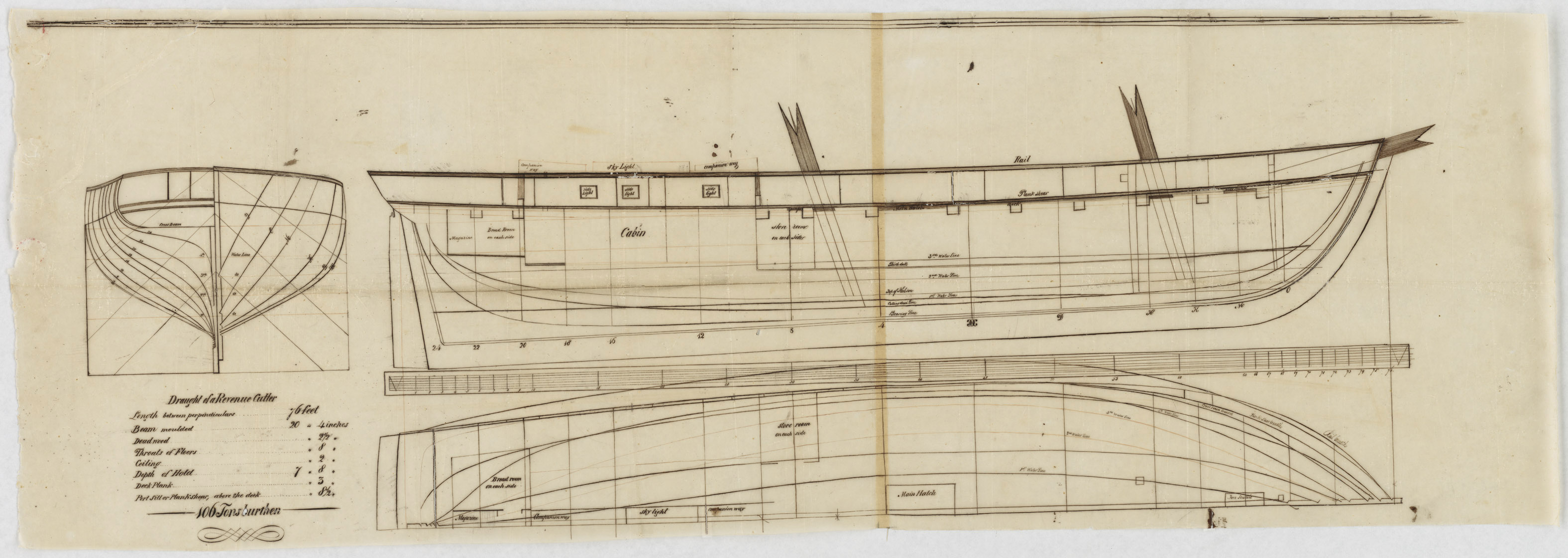
The Lighthouse Service also tended buoys, range lights, and other aids-to-navigation near Charleston. In 1914, the service purchased property for its buoy depot and support yard on the city’s southern waterfront six blocks east of The Battery. In 1934, the service built on the grounds a two-story concrete and brick building to house its district headquarters. In 1939, the U.S. Lighthouse Service became part of the Coast Guard and, during World War II, the old Lighthouse Service building became the Coast Guard’s Captain-of-the-Port office. This office oversaw the Coast Guard’s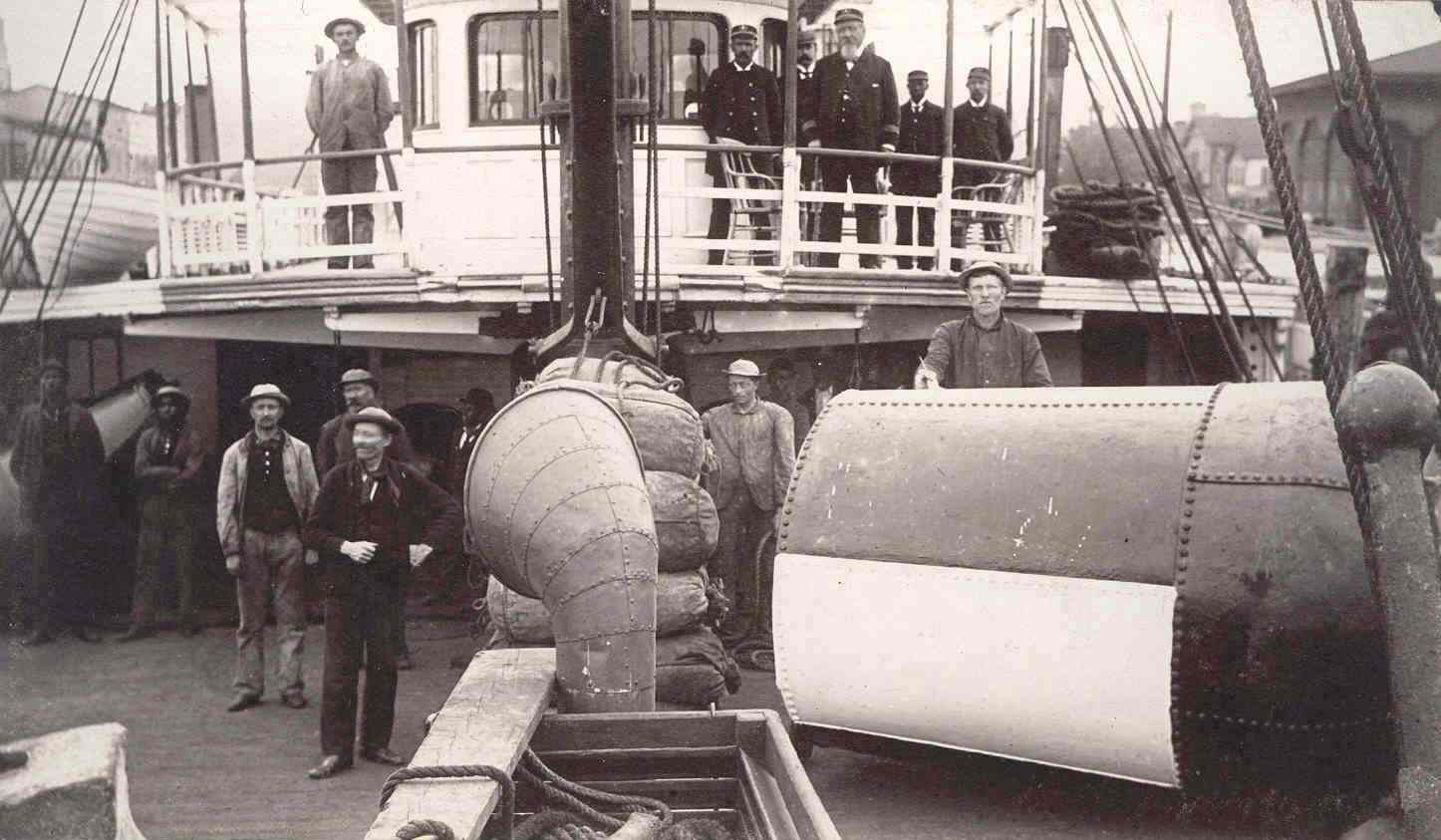 wartime operations for the Port of Charleston.
wartime operations for the Port of Charleston.
Formed in 1878, the Coast Guard ancestor agency of the U.S. Life-Saving Service began to populate the East Coast with lifesaving stations. These included a new lifesaving station on Morris Island in 1885. However, Charleston’s shipping channel was subsequently diverted, so the station was moved in 1894 and re-opened on Sullivan’s Island in 1895. The station at Sullivan’s Island had two surfboats with a crew of six surfmen and one keeper. Sullivan’s Island was the only lifesaving station built in South Carolina.
In 1915, the Life-Saving Service and the Revenue Cutter Service were combined to form the U.S. Coast Guard. Two years later, after U.S. entry into World War I, the new military service supported traditional wartime missions essential to the safety and sec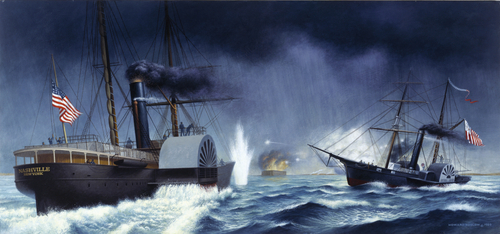 urity of Charleston, including port security, marine safety and law enforcement.
urity of Charleston, including port security, marine safety and law enforcement.
During World War II, the service’s Captain-of-the-Port Building in Charleston became Coast Guard headquarters for local missions and operations. These included harbor security, maritime firefighting and explosive loading details. Other wartime duties included overseeing safety standards in local shipyards; and guarding strategic facilities along the waterfront, such as piers, moorings, bridges, shipyards and railyards located near the docks.
Charleston was also regional headquarters for the Coast Guard mounted beach patrol. Boasting hundreds of horses and uniformed equestrians, the beach patrol used existing stables at Hilton Head Island’s polo grounds for 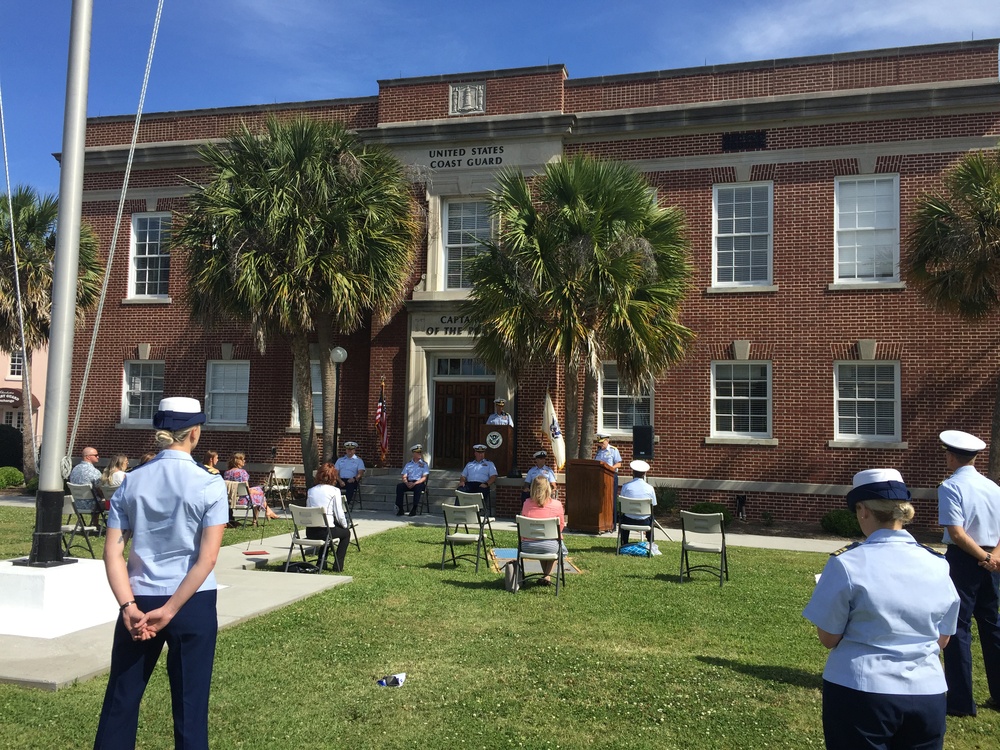 training. The facility at Hilton Head trained Coast Guardsmen, horses, and dogs to patrol the beaches of North and South Carolina, Florida, and Georgia. These beach patrols covered thousands of miles of U.S. coastline watching for enemy ships, spies, and saboteurs, as well as friendly ships in distress.
training. The facility at Hilton Head trained Coast Guardsmen, horses, and dogs to patrol the beaches of North and South Carolina, Florida, and Georgia. These beach patrols covered thousands of miles of U.S. coastline watching for enemy ships, spies, and saboteurs, as well as friendly ships in distress.
Other World War II missions included local picket boat patrols and offshore cruising by Coast Guard Reservists and Auxiliarists to locate German U-boats. In fact, it was Charleston that received the first German POWs captured by the U.S. when Coast Guard cutter Icarus delivered to the Charleston Navy Yard survivors of the vanquished U-352. After processing and interrogation in Charleston, the Germans were transferred to North Carolina’s Fort Bragg and imprisoned for the remainder of the war.
After World War II, Charleston retained its importance for the Coast Guard. The service continued to support the missions of search and rescue, aids-to-navigation, Captain-of-the-Port, marine safety and, increasingly, recreational boating safety. The former buoy yard and Captain-of-the-Port office became home for Group Charleston, including a Marine Safety Office (MSO). Much later, in April of 2005, all Coast Guard offices were combined within Sector Charleston, the Coast Guard’s regional headquarters for South Carolina and Georgia’s Atlantic coast, which remains located at the old buoy yard in Charleston.
In recent years, Charleston has grown even more important as a base of Coast Guard operations. In 1996, the service closed its Atlantic Area headquarters at New York’s Governor’s Island, transferring its two East Coast-based high-endurance cutters, Gallatin and Dallas, to the shuttered Charleston Naval Shipyard, located in North Charleston. The facility also became homeport for the sea-going buoy tender Coast Guard Cutter Willow. In 2004, the Coast Guard’s Maritime Law Enforcement Academy was set-up nearby at the Federal Law Enforcement Training Center. This facility increased the Coast Guard presence at what became Joint Base Charleston in 2009.
In October 2015, the North Charleston cutter base was officially commissioned as Coast Guard Base Charleston with new National Security Cutters Hamilton and James replacing the old Gallatin and Dallas. The recently commissioned National Security Cutter Stone has joined its two sister cutters and future plans see the facility becoming a “super base” supporting two more NSCs, as well as units of the new medium-endurance class of Offshore Patrol Cutters.
Law enforcement is the service’s original mission dating back to Alexander Hamilton’s founding in 1790—today it remains a major part of the Coast Guard’s duties in Charleston. Meanwhile, the importance of Charleston to the Coast Guard and its missions continues to grow at the Coast Guard’s Sector Charleston and Base Charleston.
